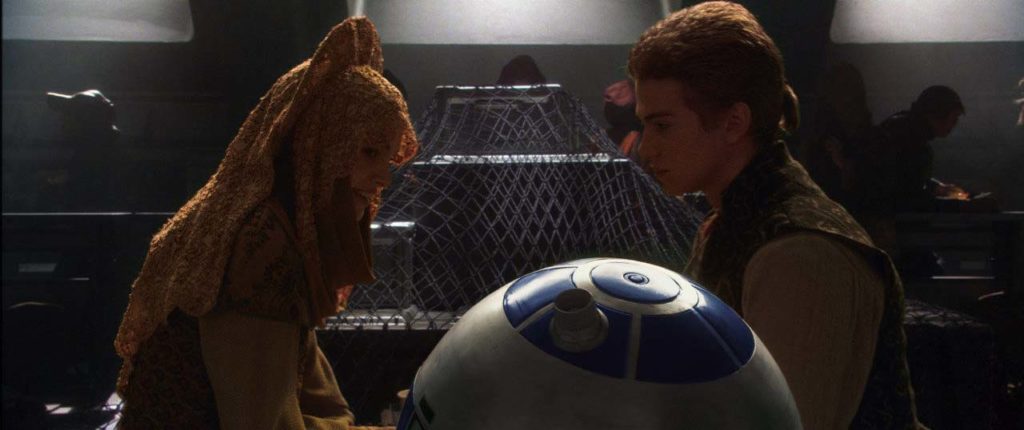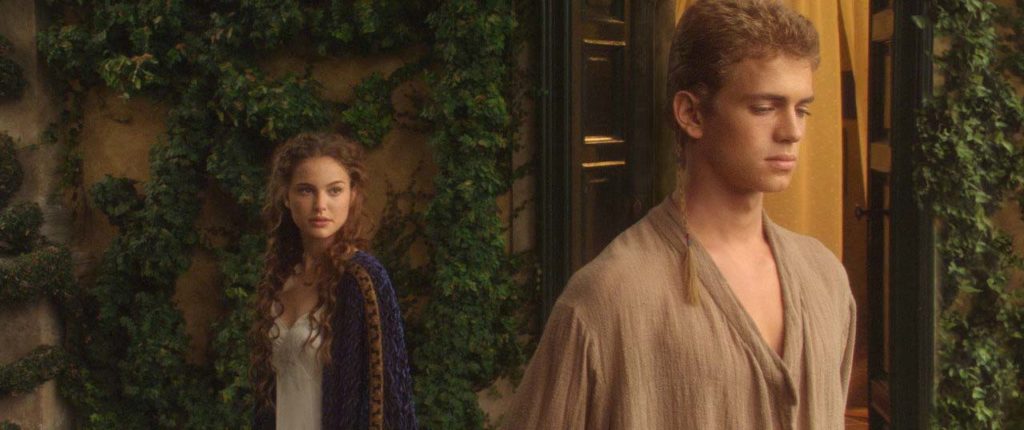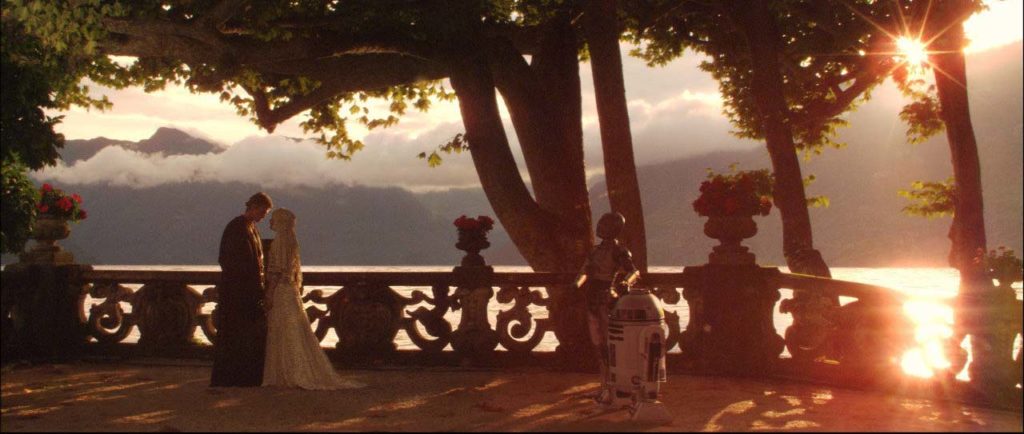Untold Star Wars: Padme’s Family
Perhaps due to George Lucas’ enjoyment of crafting a new generation of Star Wars characters in the prequels – who then couldn’t all have the requisite amount of screen time – Padme Amidala was the character who suffered most in the editing room. In Revenge of the Sith, her story arc that hints at the beginnings of the Rebel Alliance was excised. In Attack of the Clones, the exploration of her home life on Naboo was removed before the final cut was locked.
While Obi-Wan investigates the mystery of Jango Fett and the Kamino saber dart, Anakin is tasked with protecting Senator Padme Amidala. The pair go into hiding on Naboo, heading for the Lake Country to keep her safe – it is there that their romance becomes to blossom.
The scene in which they fist arrive on Naboo sees them discussing their lives, catching up on what has happened in the ten years since they met. In the deleted scenes section of the Attack of the Clones DVD, an extended version of the scene reveals that a longer conversation was originally planned. The conversation offers a number of insights into Padme’s character – she never expected to find herself living in Theed Palace as queen, and had expected to have a family by now. Her reason for not having a family is being asked by the Queen to become Senator for Naboo, demonstrating her commitment to public service.

The prequel trilogy is filled with references to how democracies fall to become dictatorships, and in the extended version of this scene Padme tells Anakin, ‘popular rule is not democracy’. This is in reaction to him mentioning that when her terms as elected queen were up, the people wanted the constitution to be amended. Although not referenced in the final film, this was intended to contrast with Palpatine, who has used various crises to stay in office beyond the usual period. Padme genuinely believes in democracy, whereas Palpatine will circumvent it where necessary – her character is an important counterpoint to his.
The next scene shows Padme and Anakin arriving for dinner at the Senator’s family home, where her parents and sister welcome them into a much more humble abode than she is seen in on Coruscant. The contrast between her parents offering typical familial comments and expressing concern about her wellbeing with the grand political life on Coruscant demonstrates that Padme has not lost touch with her more humble roots. It shows a less formal side to the character, a reminder that she too is human and fallible.

A few short scenes that follow the dinner see Anakin walking and talking with Padme’s father while her sister tries to get Padme to open up about her feelings for Anakin. These moments do seem somewhat out of place in a Star Wars film, more appropriate for a period drama – but Star Wars has always drawn on many cinematic influences, and the Padme side of this scene is more naturalistic than some of the more stilted dialogue that occurs later in Attack of the Clones.
The next scene in this sequence sees Anakin fascinated by Padme’s bedroom. A nice little touch are holo-frames on the wall, depicting moving scenes – it is not often that domestic scenes are depicted in the Star Wars movies. Anakin and Padme share a lack of a fixed home, both relating where they belong to their families. His questions about her play out much like any potential partner seeing the other person’s space for the first time, like the earlier scene making this one of the more genuine feeling scenes in their courtship.

Padme also talks about time she spent relocating children as part of a relief effort, further underscoring her altruism. She talks about the children then dying – a dark subject matter, even for a film that involves cloning an entire army for the sole purpose of war – but it demonstrates the character’s resilience, continuing to serve a greater cause despite seeing such tragedies first hand.
It underscores the contrast between Padme and Anakin that is developed further in the final film, with her genuine selfless passion for democracy and his for authoritarianism. Although it is brushed off as a joke, there is a certain earnestness underscoring his insistence that ‘they should be made to’ agree, when discussing the Senators with Padme. Her character is driven by a desire to do good, to improve the situation of those around her. Anakin, although he wishes to help others, tends to be driven more by a desire to protect those who matter to him personally – he doesn’t have grand ideals about democracy like Padme. This allows Chancellor Palpatine to manipulate him, using his fear of loss to plant the seeds of a new worldview in the young Jedi’s head.

Anakin Skywalker’s journey is of course tragic, which is underscored when seeing him interacting with Padme’s family in these deleted scenes. It’s another contrast between the pair – he only had his mother, who in this film will be taken from him. Padme has a big, supportive family to rely on. It perhaps suggests that the support Padme had around her, and the relatively gilded life she led, allowed her to make more positive choices than Anakin did.
The cast portraying Padme’s family are only seen in the finished saga during her funeral in Revenge of the Sith, which at least gives them a brief moment of screen time, if not the speaking roles they originally had in this sub-plot. Although the plot functions perfectly well without them, it is a shame that these scenes, that would have fleshed Padme out further, had to be excised. In the finished movies, she is painted in broad brushstrokes, as is common for Star Wars. Her altruistic, determined nature shines through and these deleted scenes serve to deepen that character.


